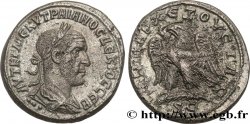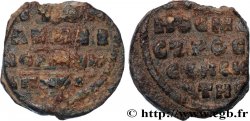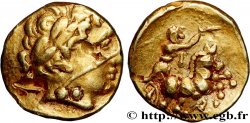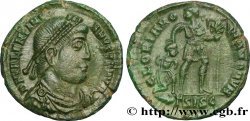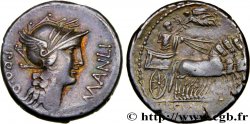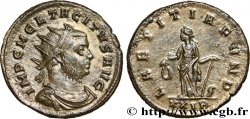bpv_154368 - TRAIANO DECIO Tétradrachme syro-phénicien
non disponibile.
Articolo venduto sul nostro negozio
Prezzo : 38.00 €
Articolo venduto sul nostro negozio
Prezzo : 38.00 €
Tipo : Tétradrachme syro-phénicien
Data: 251
Nome della officina / città: Antioche, Syrie, Séleucie et Piérie
Metallo : billone
Diametro : 28 mm
Asse di coniazione : 5 h.
Peso : 11,45 g.
Commenti sullo stato di conservazione:
Monnaie correcte mais victime d’un nettoyage assassin qui laisse le cuivre apparent. Elle se repatinera, un jour, mais il faudra de la patience
N° nelle opere di riferimento :
Diritto
Descrittivo diritto : Buste lauré, drapé et cuirassé de Trajan Dèce à droite, vu de trois quarts en arrière (A*2), trois globules sous le buste.
Legenda diritto : AUT K G ME KU TRAIANOS DEKIOS SEB
Traduzione diritto : (L’empereur césar Caius Messius Quintus Trajan Dèce auguste).
Rovescio
Titolatura rovescio : S C À L’EXERGUE.
Descrittivo rovescio : Aigle debout à droite sur une palme, les ailes déployées, tête à droite et queue à gauche, tenant une couronne feuillée dans son bec.
Legenda rovescio : DHMARC EX OUSIAS
Traduzione rovescio : (Revêtu de la puissance tribunitienne / avec l’accord du Sénat d’Antioche).
Commento
Le gros des émissions de Trajan Dèce porte une titulature avec son nom (Dèce) et son surnom adopté (Trajan). Ces émissions se répartissent sur deux années que l’on distingue par l’ordre nom/surnom dans la titulature. Nous connaissons l’ordre par comparaison avec les émissions d’Alexandrie où la même inversion se produit dans la titulature mais où les frappes sont datées (1ere ou 2e année).
Comme pour les émissions inaugurales, l’exergue ANTIOXIA des 3e et 4e consulats de Philippe disparaît et est remplacée par la palme, en usage avant le troisième consulat de Philippe. Faut-il en déduire que le financement des émissions changea et retourna aux autorités provinciales alors qu’elles auraient été assumées par la ville durant les 3e et 4e consulats de Philippe ? Il faut se rappeler que le frère de Philippe, Priscus, installé à Antioche pendant tout le règne avec tous les pouvoirs (y compris le titre de Rector Orientis !) avait peut-être obligé la ville à financer les émissions monétaires ; la source de son pouvoir disparue (on ignore sa fin) on peut imaginer que la ville se débarrassa du fardeau qui revint donc aux nouvelles autorités provinciales, trop heureuses de manifester leur allégeance au nouveau pouvoir par des émissions monétaires à son effigie.
Le choix adopté dans le Prieur, mettre tous les bustes particuliers à part, quelque soit leur officine, rend la lecture des émissions difficile et ne serait plus adopté aujourd’hui, au profit d’un classement par officines.
En effet, si le buste type, lauré, drapé et cuirassé prédomine très largement, on ne peut percevoir la logique de gravure des bustes exceptionnels qu’en fonction de leur présence où non dans des officines. Ce reclassement devra être fait.
On note que les sigma sont gravés en C.
Dans la base TSP maintenue par Michel Prieur, quarante huit exemplaires sont maintenant répertoriés pour ce type. Notre exemplaire est le 0581_041.
The bulk of Trajan Decius's issues bear a title with his name (Deceius) and his adopted nickname (Trajan). These issues are spread over two years, distinguished by the name/nickname order in the title.. We know the order by comparison with the Alexandria issues where the same inversion occurs in the title but where the strikes are dated (1st or 2nd year).
As with the inaugural issues, the exergue ANTIOXIA of the 3rd and 4th consulates of Philip disappears and is replaced by the palm, in use before the third consulate of Philip. Should we deduce from this that the financing of the issues changed and returned to the provincial authorities when they would have been assumed by the city during the 3rd and 4th consulates of Philip? It must be remembered that Philip's brother, Priscus, installed in Antioch throughout the reign with all the powers (including the title of Rector Orientis!) had perhaps forced the city to finance the monetary issues; the source of his power having disappeared (we do not know how it ended) we can imagine that the city got rid of the burden which therefore fell to the new provincial authorities, only too happy to show their allegiance to the new power by issuing monetary issues bearing his image.
The choice adopted in the Priory, to put all the particular busts apart, whatever their office, makes the reading of the emissions difficult and would no longer be adopted today, in favor of a classification by offices.
Indeed, if the typical bust, laureate, draped and armored predominates very largely, we can only perceive the logic of engraving exceptional busts according to their presence or not in workshops. This reclassification will have to be done.
Note that the sigmas are engraved in C.
In the TSP database maintained by Michel Prieur, forty-eight examples are now listed for this type. Our example is 0581_041
Comme pour les émissions inaugurales, l’exergue ANTIOXIA des 3e et 4e consulats de Philippe disparaît et est remplacée par la palme, en usage avant le troisième consulat de Philippe. Faut-il en déduire que le financement des émissions changea et retourna aux autorités provinciales alors qu’elles auraient été assumées par la ville durant les 3e et 4e consulats de Philippe ? Il faut se rappeler que le frère de Philippe, Priscus, installé à Antioche pendant tout le règne avec tous les pouvoirs (y compris le titre de Rector Orientis !) avait peut-être obligé la ville à financer les émissions monétaires ; la source de son pouvoir disparue (on ignore sa fin) on peut imaginer que la ville se débarrassa du fardeau qui revint donc aux nouvelles autorités provinciales, trop heureuses de manifester leur allégeance au nouveau pouvoir par des émissions monétaires à son effigie.
Le choix adopté dans le Prieur, mettre tous les bustes particuliers à part, quelque soit leur officine, rend la lecture des émissions difficile et ne serait plus adopté aujourd’hui, au profit d’un classement par officines.
En effet, si le buste type, lauré, drapé et cuirassé prédomine très largement, on ne peut percevoir la logique de gravure des bustes exceptionnels qu’en fonction de leur présence où non dans des officines. Ce reclassement devra être fait.
On note que les sigma sont gravés en C.
Dans la base TSP maintenue par Michel Prieur, quarante huit exemplaires sont maintenant répertoriés pour ce type. Notre exemplaire est le 0581_041.
The bulk of Trajan Decius's issues bear a title with his name (Deceius) and his adopted nickname (Trajan). These issues are spread over two years, distinguished by the name/nickname order in the title.. We know the order by comparison with the Alexandria issues where the same inversion occurs in the title but where the strikes are dated (1st or 2nd year).
As with the inaugural issues, the exergue ANTIOXIA of the 3rd and 4th consulates of Philip disappears and is replaced by the palm, in use before the third consulate of Philip. Should we deduce from this that the financing of the issues changed and returned to the provincial authorities when they would have been assumed by the city during the 3rd and 4th consulates of Philip? It must be remembered that Philip's brother, Priscus, installed in Antioch throughout the reign with all the powers (including the title of Rector Orientis!) had perhaps forced the city to finance the monetary issues; the source of his power having disappeared (we do not know how it ended) we can imagine that the city got rid of the burden which therefore fell to the new provincial authorities, only too happy to show their allegiance to the new power by issuing monetary issues bearing his image.
The choice adopted in the Priory, to put all the particular busts apart, whatever their office, makes the reading of the emissions difficult and would no longer be adopted today, in favor of a classification by offices.
Indeed, if the typical bust, laureate, draped and armored predominates very largely, we can only perceive the logic of engraving exceptional busts according to their presence or not in workshops. This reclassification will have to be done.
Note that the sigmas are engraved in C.
In the TSP database maintained by Michel Prieur, forty-eight examples are now listed for this type. Our example is 0581_041







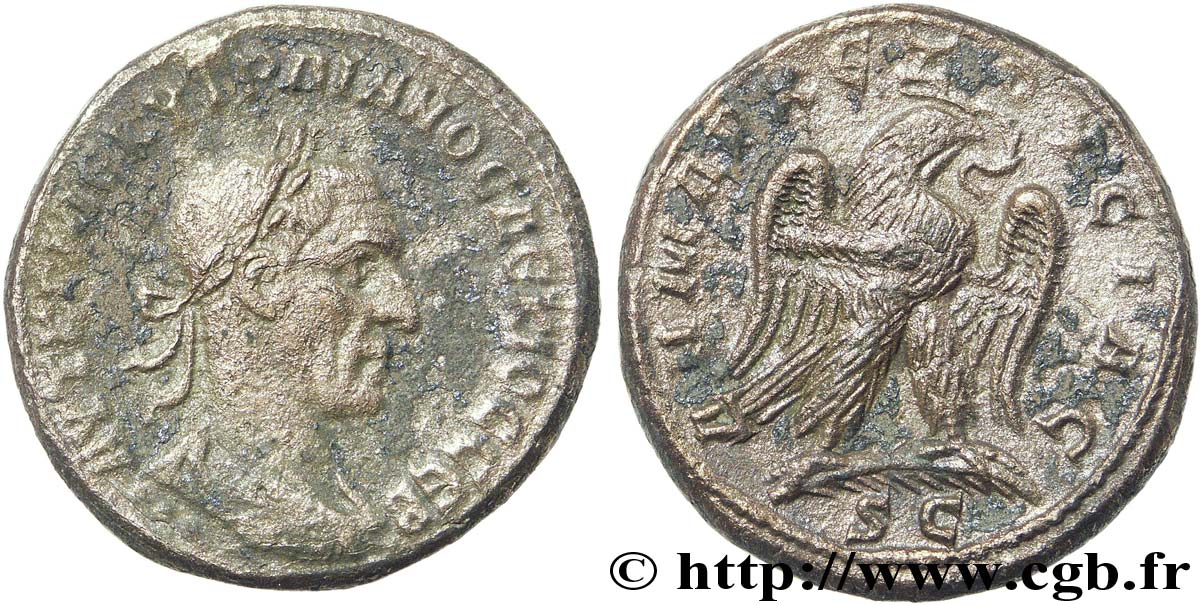
 Segnalare un errore
Segnalare un errore Stampate la pagina
Stampate la pagina Condividi mia selezione
Condividi mia selezione Fai una domanda
Fai una domanda Consegnare / vendere
Consegnare / vendere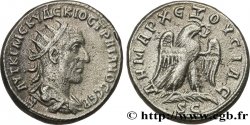
 Descrittivo
Descrittivo
